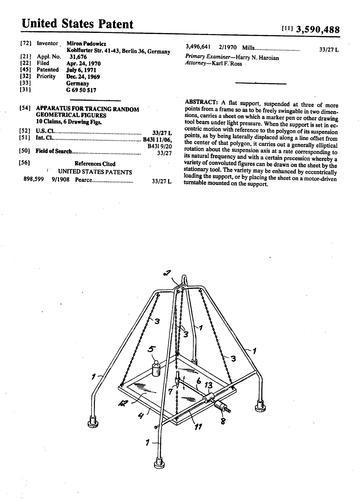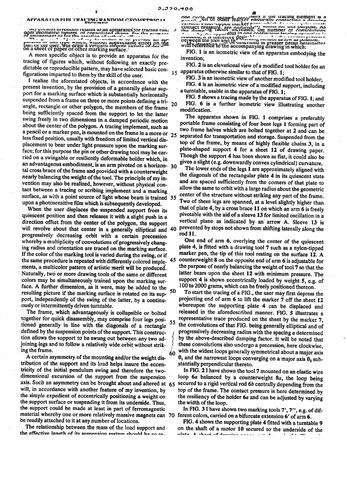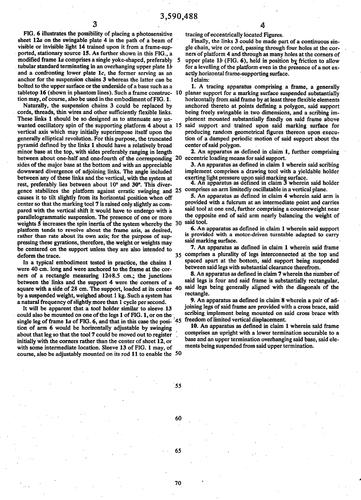Patent 3,590,488
Apparatus for Tracing Random Geometrical Figures; M. Padowicz, 1971
This is a commonly available and easily constructed pendulum drawing toy. It is comprised of a weighted drawing table suspended from a framework and incorporates a floating pen. The oscillating table creates the same motion as a Blackburn’s Pendulum (a suspended “Y” pendulum configuration). The table can be made to swing in an arc as well as to oscillate back and forth while the pen floats up and down on the drawing surface. You can change the design it produces by adjusting the length of the table’s rigging and motion decay may be inhibited by adding weight to the oscillating table.
Large versions of this apparatus can be found at many science centers and museums. The superb Questacon Science Center in Canberra, Australia, has a very large oscillating table Harmonograph comprised of an (approx.) 8’ L x 4’ W x 1’ D block of granite which likely weighs over 2 tons. It can accommodate a dozen pen arms at a time - all recording the Lissajous curve generated by the moving platform.§ “Mini Gravity Graph®”, by Magic Rainbow
§ “Pen-Dul-Art®” (also Pendul Art®), by Magic Rainbow
§ “Pen Doodler®”, by Magic Rainbow
§ “Suspension Art®”, by
§ “Swingo®”, by Gonis
§ “Swing-O-Graph®”, by Dübreq (Gonis)
Advantages of this drawing machine are; it is an uncomplicated design which compacts for easy storage, it’s easy for kids to set-up and operate, and it’s inexpensive to mass produce. One drawback of this design is that it’s difficult to adjust the tuning for different types of Lissajous curves.All of these can be found up for auction on eBay from time to time.
Click on an image to view full size -



